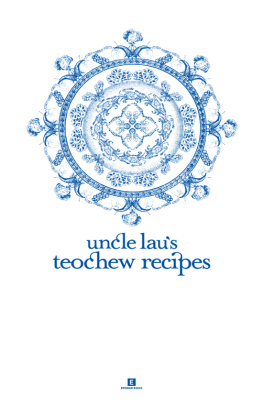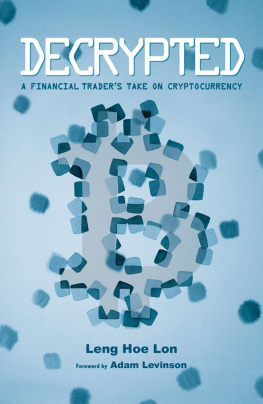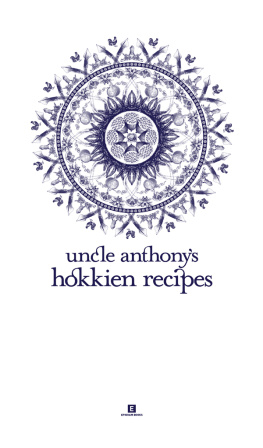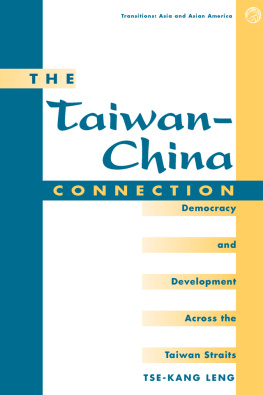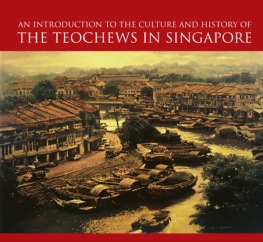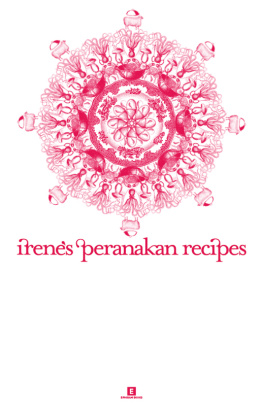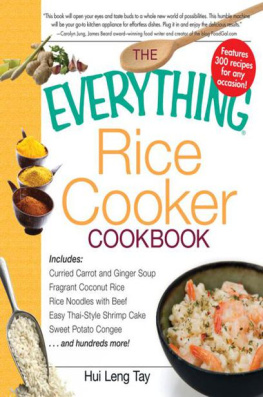
MY FAMILY CAME FROM A VILLAGE called Teng-Tang-Lau, which is a three-hour bus ride from the port of Shantou (also known as Swatow).
My father, Lau Chiap Khai, was born in Singapore. My grandfather was a businessman who had established a charcoal business in Singapore and Johor. When his China wife passed away, he married my grandmother who was a Singapore Teochew-nyonya less than half his age. When my father was old enough to start school, my grandfather decided to take him back to Shantou so that he could have a good Chinese education. There, my father attended a college set up by an American Baptist Missionary Society in Jiao-shi (Kak Chiok), an island off Shantou.
There was civil unrest while they lived in Shantou. The weak Qing Dynasty faced a rebellion led by Sun Yat Sen and the presence of the Communists and the warlords added to the political chaos. My grandfather cut off his queue but that did not save him from trouble. He was accused of being pro-Communist and put in jail for a couple of years. My grandmother had no choice but to follow him as he was moved from one jail to another so that she could look after him. Eventually, she managed to bribe some officials and he was released. My grandparents then moved the whole family back to Singapore.
My father arranged for my mother, whom he had met while studying in the same Baptist College in China, to join him in Singapore, where they got married. He learned American English at college, and this helped to land him a job at the Cold Storage located at Orchard Road. In the few years that he worked there, he learned much about the food retail business. He subsequently quit the job and set up his own grocery shop, at 196 Orchard Road, which mainly catered to foreigners.

My fathers natural talent for cooking became obvious when he gradually took over the cooking at our family gatherings, at birthdays and Chinese New Year celebrations. A self-taught cook, he was not formally trained in the art of Chinese cuisine. His recipes came from various sourcessome he learned from family or relatives in China, but most of the time, he picked up cooking techniques and recipes from the long discussions he had with his Teochew friends.
In the early 1950s, he would often meet his Teochew friends at Edinburgh Road where Chinese grocery shops, eateries and restaurants abound. As a child, he would take me there and let me wander around the market at Edinburgh Road while he drank kung-fu tea with his friends. They would reminisce about life in Shantou, spin tales of old China and invariably discuss about food.
Inspired by these long discussions on food, he would attempt to prepare the dishes at home. With the guidance of my grandmother, he would explore on his own and tried to improve and perfect each dish through trial and error. That set him off on his own cooking adventure.
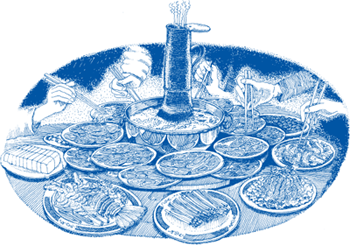
Over time, he amassed a repertoire of authentic and perfected Teochew recipes. I grew up enjoying these wonderful dishes and attribute my discerning palate to my fathers cooking. Consolidating all of my fathers recipes was no easy taskall of his dishes were never formally documented as nothing was measured and ingredients were added based on experience. Nevertheless, I hope to share my familys culinary heirloom, so current and future generations will also be able to enjoy authentic Teochew choice cuisine.
Tan Lee Leng
uncle laus teochew recipes
Copyright 2012 Lau Chiap Khai and Lau Lee Leng
Published in Singapore by Epigram Books
www.epigrambooks.sg
Illustrations by Jack Tan.
National Library Board
Singapore Cataloguing in Publication Data
Lau Chiap Khai.
Uncle Laus Teochew Recipes / Lau Chiap Khai, Lau Lee Leng. - Singapore : Epigrams Books, 2012.
p. cm.
ISBN 978-981-07-1616-5
ISBN 978-981-07-3337-7 (epub)
1. Cooking, Singaporean. 2. Cooking, Chinese. I. Lau, Lee Leng, 1941- II. Title.
TX724.5.S55
641.595957 -- dc22 OCN778342576
All rights reserved. No part of this publication may be reproduced without prior consent from the publisher.
First Edition

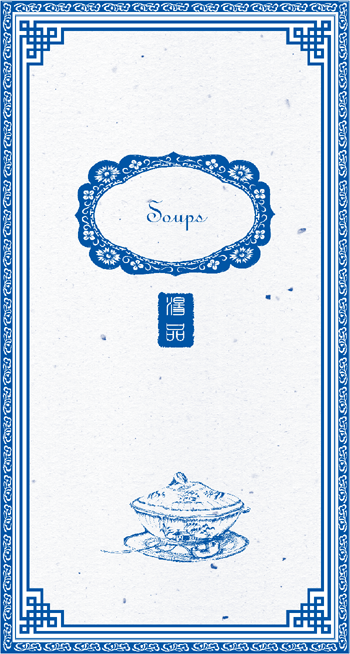
EVERYDAY CHICKEN STOCK
This is a clear stock and should never be boiled because it will become cloudy and the fat will melt and combine with the soup. A good chicken stock requires not only bones but also meat to give it a rich flavour.
| kg chicken bones (including body parts like feet, wing, neck and legs) |
| l water |
| cup root vegetables (mixture of coriander stalk and roots, celery and carrot) |
| slices ginger |
| scallions |
pinch of salt |
pinch of pepper |
Put the chicken bones into a heavy pot with the water. Bring to a boil then simmer gently for 1 hour. Skim off any scum that rises to the surface.
Add in the root vegetables, ginger, scallions and salt and pepper. Continue to simmer for 30 minutes. Allow stock to cool before straining through a fine mesh. Store the stock in the refrigerator.
You may remove some of the fats that will rise to the surface when the stock is cold.
Tip
Do not remove all the fat as it gives much flavour to the stock.
PORK AND CHICKEN STOCK
| l chicken stock |
500-700 | g pork bones |
| slices ginger |
| scallions |
pinch of salt |
pinch of pepper |
| piece Chinese jin hua ham bone (optional) |
Put the pork and Chinese jin hua ham bones into a heavy pot and boil it together with the chicken stock. Allow the stock to simmer for 1 hour. Skim off any scum that rises to the surface.
Add the ginger, scallions, salt and pepper. Continue to simmer over low heat for another hour before draining the stock through a fine mesh. Allow stock to cool before storing in the refrigerator.
You may remove some of the fats that will rise to the surface when the stock is cold.
Tips
Pork bones are boiled with chicken stock to make a richer, tastier and sweeter soup. It is often used as a soup base, for stir-frying dishes and preparing sauces. Chinese jin hua ham bones can be added to enhance the flavour of the stock.
Do not remove all the fat as it gives much flavour to the stock.
FISH STOCK
Fish stock is made from boiling fish bones with chicken or pork bones, which are added to enhance the flavour of the stock.
| g chicken bones or a mixture of chicken and pork bones |
|
Next page
